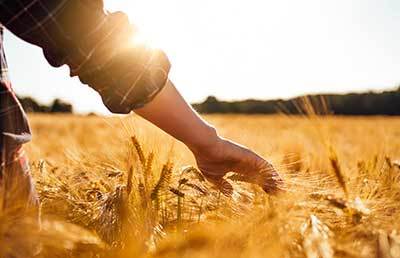The Best Part of a Day – Is Riding a Combine

Last Friday I got home from a 10 day business trip. I was able to spend the night at home and headed out to Missoula Montana with my wife on Saturday. We ended up spending Saturday night in Spokane and then took the scenic route to Missoula on Sunday (up to Bonners Ferry, Idaho, over to Kalispell, Montana and then down the back side of Flathead Lake to Missoula).
I spoke at a conference on Monday. We then headed home Tuesday morning. On the drive, I reached out to my tenant farmer on my CRP ground near my home that would go into production next spring to find out if he was still doing harvest. He indicated he was and the field he was harvesting was right above our home and he invited me to come ride the combine.
Our home is located on the North Fork of the Touchet River about 6 miles south of Dayton, Washington. Another 15 miles is the Bluewood Ski Resort. Our home is at about 2,000 feet of elevation and we have about 40 acres of pasture, etc. located between the road and the river. Right behind the river is a steep hill with Ponderosa Pines that goes up at close to an 80 percent slope for about half a mile.
The Wolf Fork of the Touchet River meets the North Fork about a quarter mile below our house. The North Fork and Work Fork canyons provide “borders” to our property and the ground that he was harvesting.
The field that he was harvesting is located on our south border so I really looked forward to riding the combine to find out exactly where our property line was.
I headed up the Wolf Fork for about 4 miles and met up with his wife who took me up to the first field located about 200 feet above the river. We met up with the Quad Trak that was pulling the 925 bushel grain cart and that driver went to get another truck (the two drivers were their son and son-in-law) and she hopped in the Quad Trak to drive it for the remaining time to harvest that field.
We then started to go up hill through a 30 acre field and probably gained about 200-300 feet of elevation, then through a cut swath to another 11 acre field that gained another 200-300 feet and finally through a rock area that gained at least 200 feet. The elevation of the field up top was 3,200 and we started at 2,100.
The farmer was operating a new Gleaner S98 with a 35′ draper header. It could handle a larger draper, but with the steep hills, etc. it was not appropriate. The field was only about 75 acres, however, it was at least a mile long. Last year the yield on the field was over 100 bushels per acre and this field had been recropped for over 20 years.
The normal rotation would be spring wheat, then dry peas and finally winter wheat on a three-year rotation. However, this field was tough for that rotation due to:
- A spring ran down the road and field every spring creating issues in getting spring work done, and
- There is a 60 head elk herd that calls that area home and they love to eat peas.
The largest wolf herd is Washington state is located across the canyon with at least 13 wolves.
I rode with the farmer until he finished harvesting the field. We received about a 3″ rainfall in about 24 hours during February and everyone thought we would have a good crop this year. However, after that rainfall, our total rain until now is less than half an inch and the wheat has suffered. Instead of 100 bushels per acre, it appeared that this field would end up at about 50-60 bushels per acre.
The grain cart holds up to 925 bushels, however, due to the steepness of the route to the trucks, only one dump of about 330 bushels was loaded onto the cart before it went to dump into the truck. Having over 75,000 pounds of grain and cart pushing a 54,000 pound Quad Trak down a 60% slope would not be wise.
There is something therapeutic about riding a combine. I always enjoy my time on the combine and the only thing better than riding a combine is operating one and I will get my chance to harvest corn or soybeans later this fall.
Paul Neiffer is a certified public accountant and business advisor specializing in income taxation, accounting services, and succession planning for farmers and agribusiness processors. Paul is a principal with CliftonLarsonAllen in Walla Walla, Washington, as well as a regular speaker at national conferences and contributor at agweb.com. Raised on a farm in central Washington, he has been immersed in the ag industry his entire life, including the last 30 years professionally. Paul and his wife purchase an 180 acre ranch in 2016 and enjoy keeping it full of animals.

I second the picture request! I spent a few minutes poking around on google maps and it looks like the landscape is a little different than here in Maryland! Glad you had a good trip and made it back for some time in the field!
-Rob